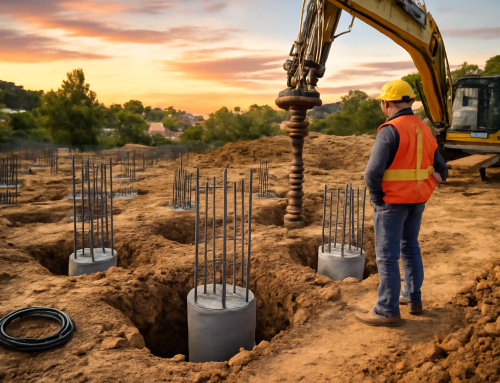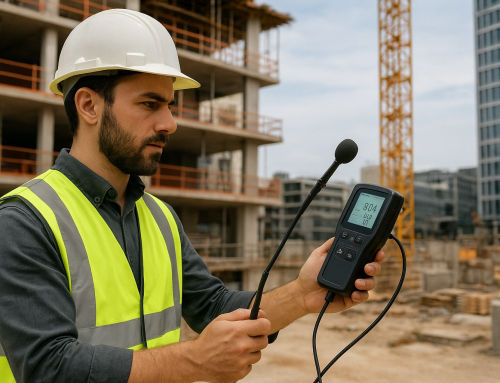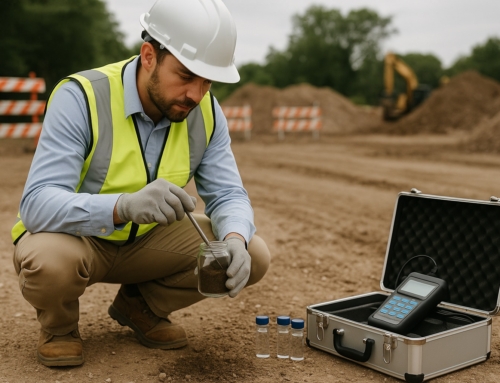It is not all that money or paper work when buying or developing property. Environmental risk is also included in it. Backdoor attacks can make a valuable site costly.
Oil spills, hidden tanks, or chemicals can cause problems which can be over the long-term. Cleanup can cost millions.
It may be expensive to buy or develop a land that is not even aware of these risks. This is why; every buyer or lender chooses Phase 1 Environmental Site Assessment (ESA).
Phase 1 ESA identifies the possible or actual environmental pollution of any site. It is normally done prior to a sale or a financing transaction.
It cushions the property owners, developers and banks against sudden risks.
This article defines various aspects of a Phase 1 ESA and its importance. It also expounds and why it defends your investment.
It closely recounts its importance for California and the Southern California. Especially after the Eaton Canyon and Pacific Palisades fires.
Introduction to Phase 1 Assessments
Phase 1 Environmental Site Assessment is a type of environmental investigation. It is also not intrusive, and is in line with the ASTM E1527-21 Standard Practice. It does not imply any drilling on soil or water samples.
Rather, professionals gather and scan background information. They examine the history, land use and the potential sources of contamination.
ESA has simple objectives. Phase 1 ESA gives the Recognized Environmental Conditions (RECs). The signs or evidence of hazardous material or petroleum is known as RECs.
A Phase 1 ESA differs with Phase II ESA. Phase II. During phase I, a physical check-in, there is the scrutiny of records and documents.
During phase II, testing, sampling, and lab analyses are performed to verify contamination. Phase 1 is an environmental health inspection of the property.
It is the initial move towards ensuring that land is safe, whether you want to buy, sell or even construct.
Why Is a Phase 1 Assessment Required?
A Phase 1 ESA is more than a precaution measure. That is usually both a legal and monetary necessity. Lenders and banks demand it prior to loaning of commercial and industrial properties.
It is also required by the small business administration (SBA) and HUD. This will make sure that money is not spent on buying polluted sites. Such requirements are facilitated by the law.
Under Superfund Law, the owners of property may be liable to contamination. But it does not even matter they cause it or not. This is also known as Comprehensive Environmental Response, Compensation, and Liability Act (CERCLA ).
Phase 1 ESA is a fulfillment of the All-Appropriate Inquiry (AAI) requirement. This offers CERCLA protection of liability. It demonstrates that the buyer or the lender was responsible prior to the purchase.
Phase 1 ESA is required for the mergers, acquisitions, refinancing and permitting. Any deal that involves the land with a commercial or industrial history has to have one. In brief, it is the paltry price to pay rather huge losses in future.
The correct Phase 1 Assessment can prevent project delays and the risky project error that can be made. Proper Phase 1 Assessments can save time and project budgets.
What Does a Phase 1 ESA Covers?
All Phase 1 ESA are based on the arrangement of ASTM E1527-21. It consists of four major stages. Theses stages include:
Site Inspection
A professional environmental arranger makes a visit to the location. This eye examination is searching evidence of contamination or suspicious activity. They observe:
Oil or chemical stains: It may be used to give information about oil or chemical spill and leakage.
Storage tanks or barrels: They can be the indication of dangerous materials at site.
Chemical odors: The odor may demonstrate the presence of petroleum etc.
Stained soil or Dead plants: It may also be another indicator of being exposed to chemicals.
Dumping places or waste pits: These places in surround may be a source of contamination.
They also check the surrounding premises. Your land could be affected by another gas station or factory. This checking can contribute to potential risks of contamination.
Records Review
The next step involves the review of historical and regulatory data. The review is processed by certified consultant.
It gives a picture of how this site and other immediate surroundings were utilized in the past. The changes can be tracked with the help of historical aerial photos and fire insurance maps.
Typical records include:
Title and record deed: It establish the history of ownership. Further it provides the prospective environmental limitations. CalEPA and EPA databases provide information to the past reports on EIA of area.
Agencies data: LADBS offers information on previous permits to be constructed. California Geological Survey provides data about the geological conditions of the site. Moreover, it also indicates the possibilities of hazards.
Land use restrictions: Prior Hazardous or conditionally preceding cleanup is checked. This review assists in the tracing of the environmental footprint of the site of the site.
Interviews
The assessor also discusses the property with individuals. These individuals can be existing and past proprietors or tenants, site managers.
Moreover, Fire, building, or health departmental officials in the county can be approached. Closest neighbors or entrepreneurs can also be the individuals. These interviews will be able to reveal significant information that is not documented.
Incidentally, storage of drugs, spillages, or underground tanks.
Report and Conclusions
Lastly, all these findings are summarized into a Phase 1 ESA report. The report includes:
- Site maps and photos
- The research data and historical summary.
- Identified Replaceable Cost RECs, HRECs (Historical RECs) and CRECs (Controlled RECs).
- The consultant has to provide a recommendation as well.
In the event there are no RECs, the report gives the information that no further action is needed. It suggests a Phase II ESA to be tested and verified in case of any possibilities. This is a document that is included in the official due diligence record of the property.
Read more to find out Why Every building, bridge, or roadway must follow strict codes.

Environmental consultant documenting findings during a Phase 1 Environmental Site Assessment at an abandoned industrial facility in Southern California.
How the ESA Process Works?
An average Phase 1 ESA requires 2- 4 weeks. It is a simple but comprehensive process.
Step 1: Kick- off and Data Collection-The environmental company takes the preliminary data. It includes property address, maps and documentation of ownership.
Step 2: Site Visit- The on-site inspection is carried out. It is done by a Qualified Environmental Professional (QEP).
Step 3: Records Review and Interviews- They go through the government databases. Further they interrogate local contacts.
Step 4: Report Preparation – The consultant gathers and synthesizes the findings. They check the facts and to write up the report.
Step 5: The final report is given and discussed with the client. It specifies risks, and recommends future actions.
According to ASTM E1527-21, a QEP must have the right mix of education, training, and experience. Only qualified professionals can oversee or sign off on a Phase 1 ESA.
The Legal and Financial Advantages of Phase 1 ESA
A Phase 1 ESA has a number of strong advantages.
Legal Protection:
It gives evidence that the buyer had practiced due diligence properly.
This is beneficial to being eligible to the defense of CERCLA innocence of landowner.
Financial Security: Clean up expenses of polluted land may run in millions.
A Phase 1 ESA is good in preventing such surprises.
Lender Confidence:
Lenders trade in projects with known environmental performance.
It will lower their risk in the financial aspect.
Insurance Support:
Insurance support is given only with clean ESA by the insurers.
Value of property:
A clean book increases the value of a property on reselling and investor confidence.
These protections are beneficial in California where redevelopment usually occurs on old industrial land.
When and Who Needs a Phase 1 ESA?
A Phase 1 ESA is most common for:
- Business and commercial estates
- The locations that used to be served as gas stations, factories or dry cleaners.
- Vacant or redeveloped land Infrastructure or state-owned-to- private projects.
It is also required for:
- The real estate acquisitions, mergers and refinancing.
- Lender approvals in SBA, HUD and bank policies.
- One should be prudent to do it in case redevelopment is intended.
It is the one that is required to have one particularly in older or city properties. A Phase 1 ESA creates transparency, trust, and tranquility to all stakeholders. California Local and Regulatory References of projects require this.
The tests in Southern California are conducted under the local and state requirements. Key agencies include:
- California Water Resource Control Board
- Geology of California, California Geological Survey (CGS)
- Los Angeles Department of Building and Safety ( LADBS)
- California Environmental Protection Agency (CalEPA)
- CalTrans Environmental Planning Engineering
For national guidance, check: Federal Highway Authority (FHWA) AASHTO
Conclusion: The Value of a Phase 1 ESA
Phase 1 Environmental Site Assessment is not a formal rule. It is an important risk management instrument. It assists both the buyers, developers and lenders in making informed decisions.
It protects environmental unpredictability and loss of money. Two terms, redevelopment and industrial history, are frequently used interchangeably in California. A Phase 1 ESA is vital.
It guarantees adherence to the environmental legislation and promotes the sustainable development. It secures parental well-being.
Phase 1 ESA gives confidence for purchasing, refinancing, or developing land is worthwhile. It is a confirmation that your investment is secure, careful and future-proof.
Build with knowledge. Build with confidence. Build smart from the ground up.






